That was the challenge I faced when I became the second member of Zapier’s editorial team in 2014.
Zapier’s team had built a tool to automate your tedious business tasks. Anything you could do by copying and pasting—tweeting new blog posts, emailing new customers, adding orders to a spreadsheet, alerting your team of outages—Zapier could do faster, better, and while you slept. Therein lay a content strategy.
Most people didn’t know they needed Zapier three years after it was first released, but they did know they needed a way to speed up their work and solve software issues. We could tell them how to build better software workflows—and recommend Zapier along the way.
That strategy helped us build a library of content that today brings in over 2 million readers to Zapier each month. Here’s how we built it.
People weren’t searching for Zapier, not in 2014 when the product was new to the market. But they were searching for Zapier’s complements, the tools that worked with Zapier that they were already using. That’s why Zapier created its App Directory, originally called the Zapbook, as a directory of every app that integrated with Zapier.
Every new app that integrated with Zapier got a landing page listing what it automated. Gmail’s page, for example, showed you could save attachments to Google Drive, send an email when your form got filled out, or create an Asana task via email.
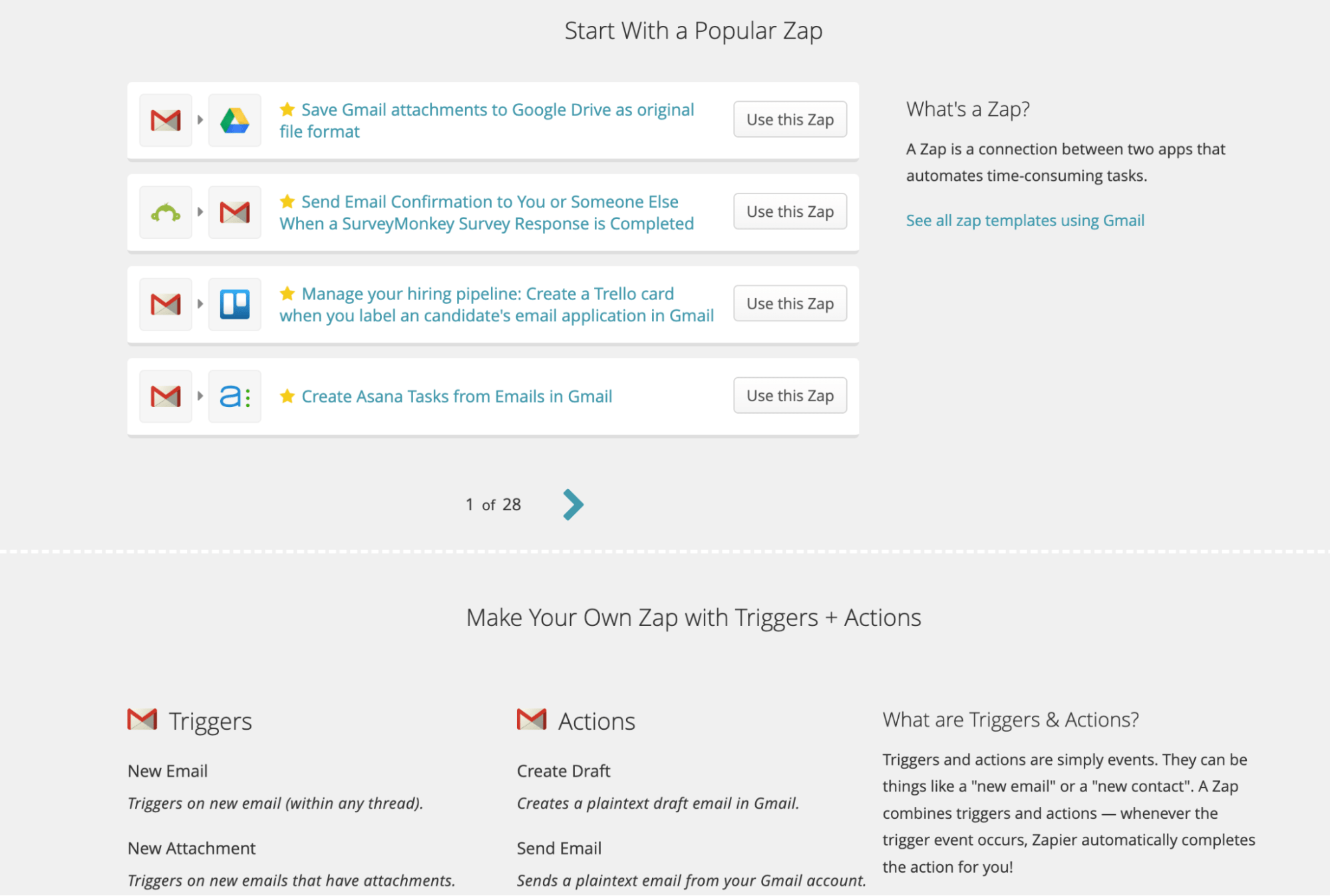
Zapier’s App Directory also listed permutations for every integration: Gmail + Salesforce, Gmail + Slack, Gmail + Google Sheets, and on and on. That’s where the real magic happened. People would search for two app names (hoping to get them to work together) and then stumble upon Zapier along the way.
Today, there are 4,403 individual integration pages, plus an incredible 38,612 pair pages that together bring in over 299,000 monthly organic search visits.
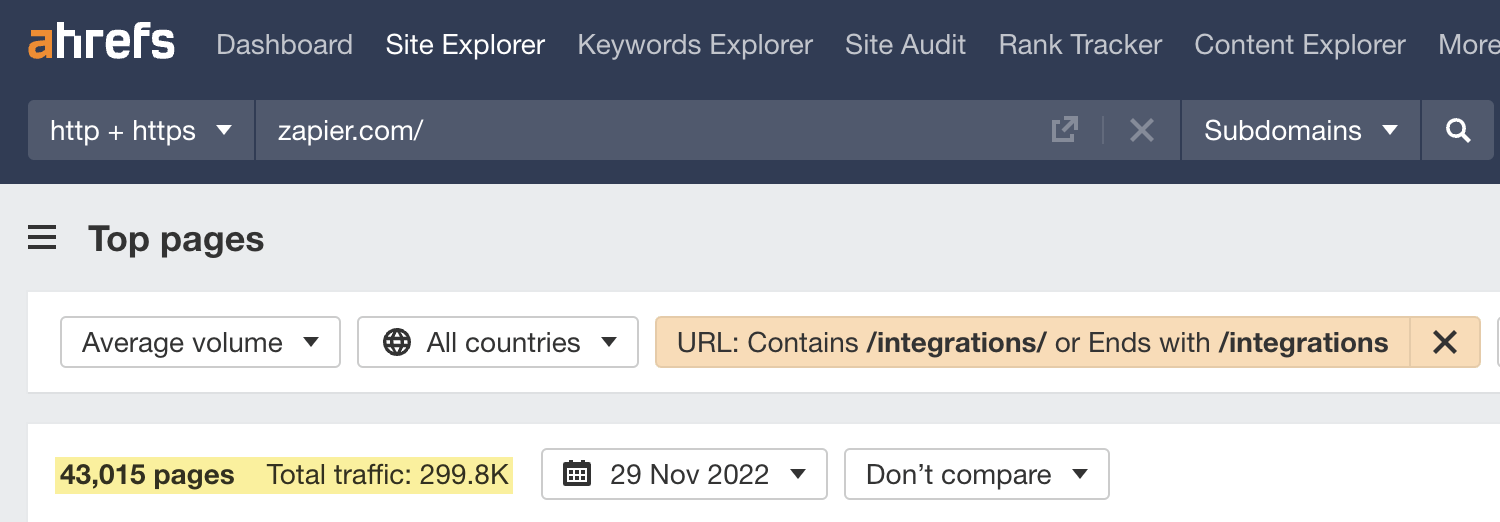
It was difficult to rank for the more popular software, but there was always a very good chance that Zapier could rank for a lesser-known app pair—say, ShipStation and PayPal—when there was little, if any, content online about using those two tools together.

The challenge was making the App Directory pages unique. Zapier started the directory with a couple dozen preset sentences; when a new two-app page was created, it’d generate a phrase like “Connect App X and Y to automate your work and be more productive.” The danger was in having so many pages with similar, thin content.
So one of my first projects was writing software reviews for the App Directory. I’d test an app and write a 500-word walkthrough of what it was like to use that tool, add a few screenshots, and more to flesh out each app’s page.

Another similar content initiative revolved around automation templates. Zapier knew which apps people connected the most, and we knew from users how those automations were used. We’d turn those into Zapier workflows that anyone could enable in a few clicks—and I’d write a roughly 100-word description to help those workflows rank in search.
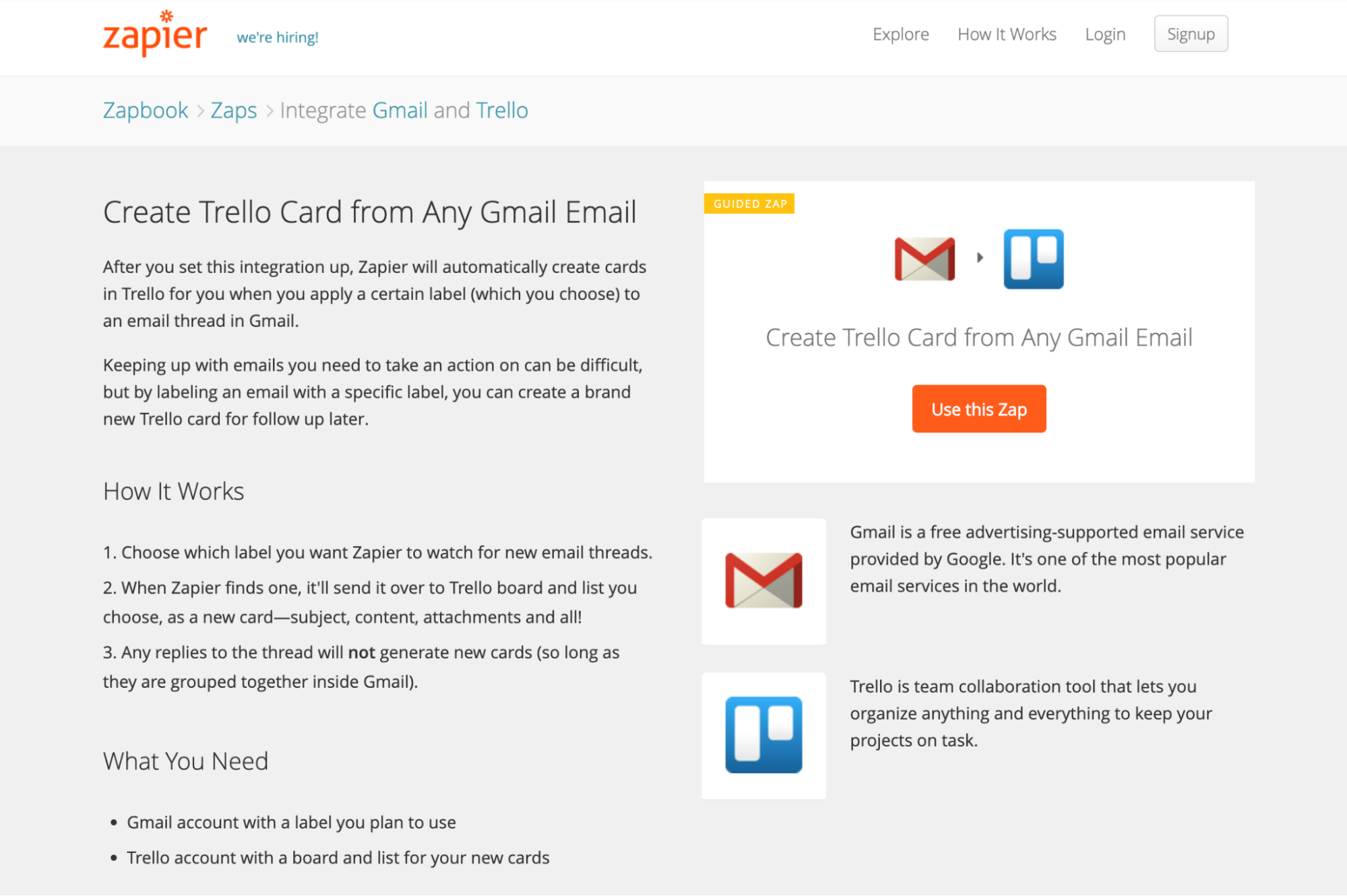
And it worked. First with Zapier’s team building templates, then with partners building templates for their users and, more recently, with Zap templates users can build and share on their own.
One of the top search results today for “email daily,” for example, is for a Zap that will let you set up an automatic daily email—a simple template that brings in ~2,400 organic visitors per month for search terms like “everyday email” and “send automatic email.”

Between those workflows and cross-linked content on the blog, today Zapier doesn’t rely on app walkthroughs to flesh out its App Directory pages. But the strategy helped boost the directory in its earliest days.
Write great stuff, and people will come. That was our basic strategy on Zapier’s blog.
It was something our managing editor, Melanie Pinola, brought from Lifehacker. “Their answer for what success looks like is ‘creating content that’s helpful,’” she told us.
My writing was focused on software tutorials and roundups. Zapier supported, at that time, hundreds of apps. I couldn’t write about everything, so it made sense to prioritize by popularity.
I’d start at the high level, checking Zapier’s software categories on Ahrefs to see which were most popular. To-do list apps and CRM software got 46,000 and 36,000 searches a month. I’d figured it was better to cover those first, then focus on smaller categories like HR or invoicing software later.
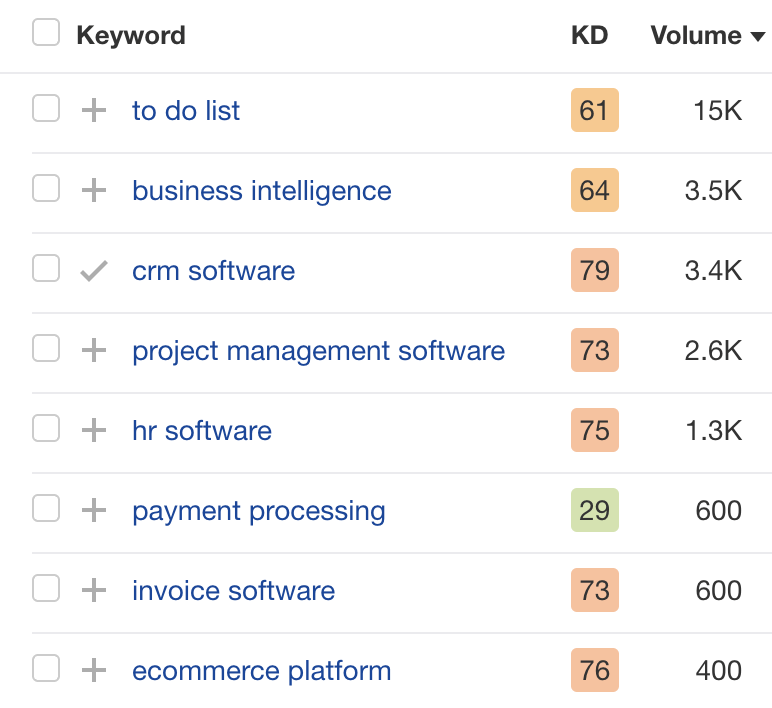
Then I’d drill down from there to find what people were searching for around these categories.
For example, I’d click the term “crm software” in Ahrefs and find that the top question was “what is CRM software” and that “CRM meaning” was a related popular term. So I’d make a note to write a guide for beginner CRM users. I’d also see the top CRMs people were searching for, such as HubSpot, when I was first writing the roundup (and Keap if you check for top CRM keywords today).

The research would also uncover topics to cover in the future. The most popular questions were about what a CRM is, so that’d be the next article I’d write as a companion to the CRM roundup. So “best CRM for small business” was another popular, easier-to-rank term—and Zapier later followed up on the original CRM roundup with a more focused roundup of those specifically for small businesses.

With keyword research out of the way, I’d switch to researching software to build an in-depth roundup article focused on the best CRM software—the keyword that most people were searching for when looking for a new CRM.
I’d test every CRM that Zapier supported, along with dozens of others. I’d take screenshots and write an App Directory roundup of each CRM tool, then pull the findings into a roundup article that showed how each app was differentiated from its peers.
It took days of research, but the final pieces were incredibly in-depth (my original CRM roundup covered 25 tools, and my Zapier project management app roundup was over 8,000 words and covered 50 tools).
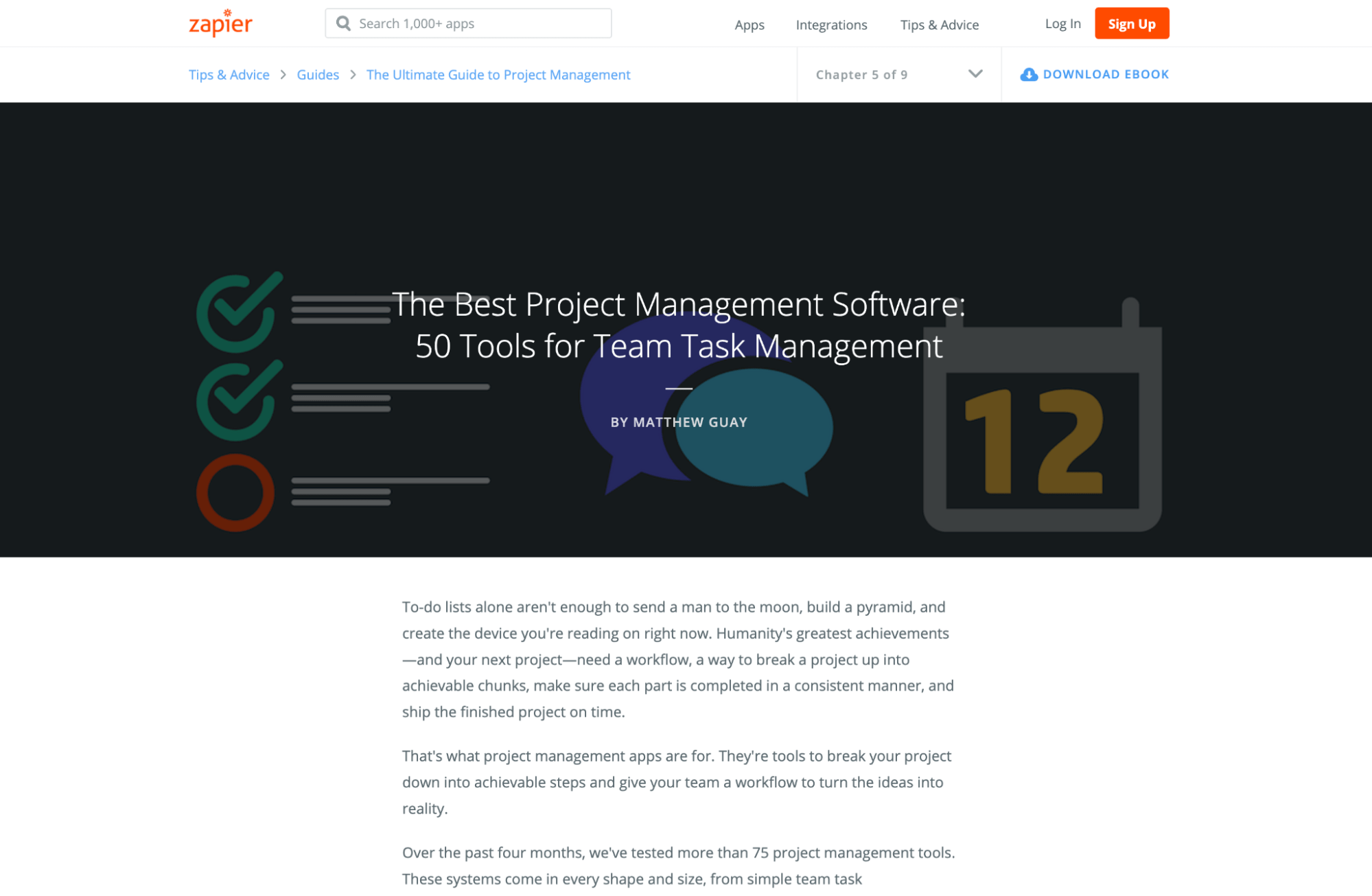
We wrote hundreds of software roundup articles on Zapier—with 171 “best of” posts live on Zapier’s blog today. Together, they bring in an estimated 1.1 million organic visits each month, years after many of them were originally researched and published.

Maybe I didn’t have to write so much. Shorter pieces can rank well too. And Zapier’s more recently updated takes on those pieces pick eight or 10 best options for a more Wirecutter-style selected take.
But the ultra-long-form pieces had their advantages. The longer content included more keywords—niche keywords, again, that we were more likely to rank for. They also let us surprise and delight more teams at other companies. I’d email each app I featured, letting them know about the article. Slowly but surely, as more partners linked to our roundups, Zapier gained backlinks and climbed Google’s search rankings.
The research took forever, but it always inspired follow-up posts. Once I’d finished the roundup, I switched gears and wrote the “What is a CRM?” article. That today still brings in hundreds of monthly organic visitors, along with the over 13,000 monthly organic visitors from the roundup. Over time, using this strategy, we ended with an incredibly wide range of roundups and tutorials that have dominated Zapier’s search traffic for years.
Roundups weren’t for everyone. To borrow terms from the project development lifecycle, they were written for readers in the discovery phase who were searching for a new tool.
Then they’d need to do stuff in the app. That’s where Zapier’s tutorials (and the App Directory’s premade Zapier workflows) came in. Those brought in readers during their development phase—when they were developing a workflow and were most likely to start using Zapier.
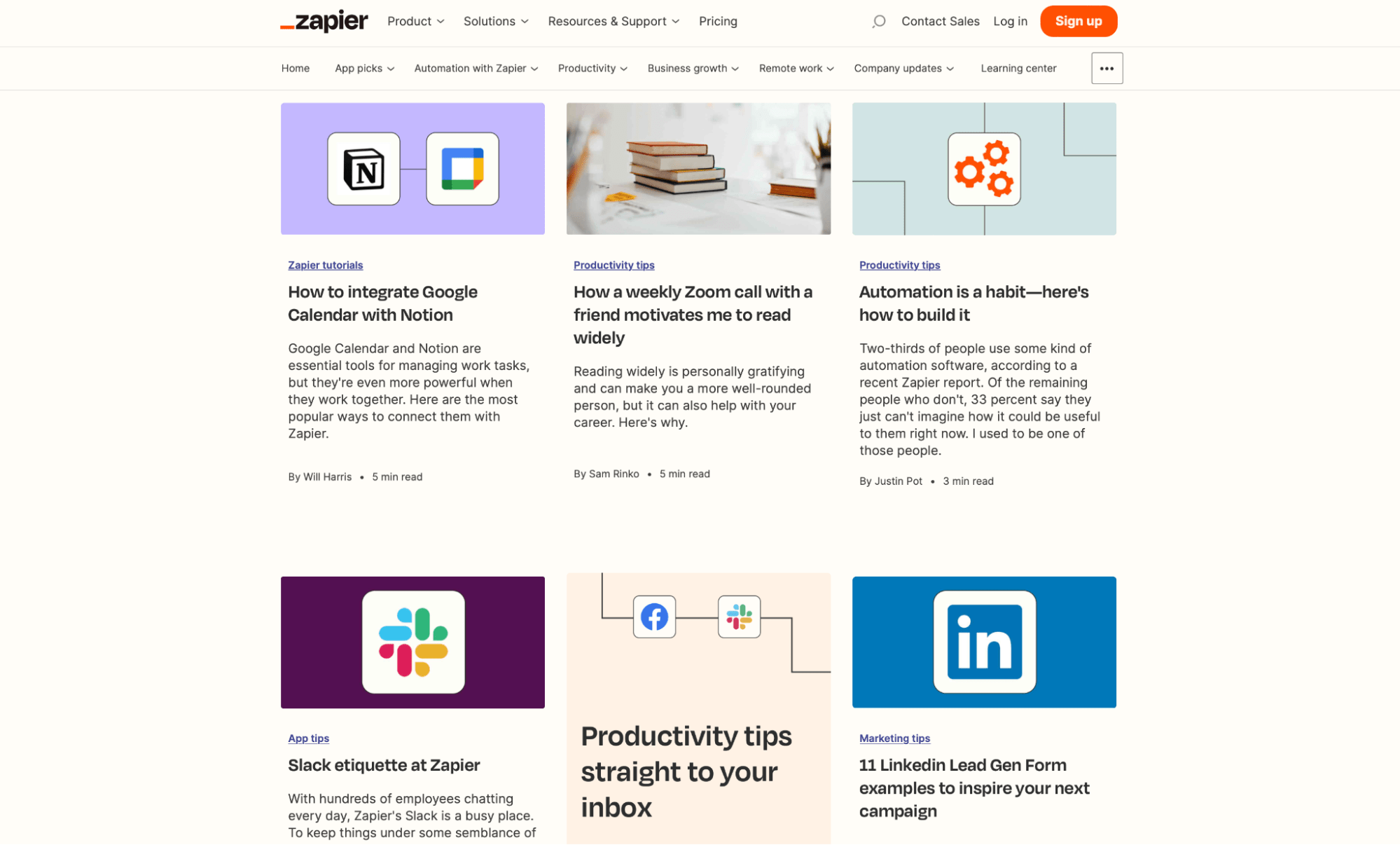
Google Sheets-focused tutorials worked especially well here. I wrote a tutorial on how to use the LOOKUP function in Google Sheets—plus how to automatically look up data in spreadsheets and more with Zapier. A companion tutorial showed how to split text—say, split a first and a last name into separate columns—in spreadsheets, followed by how to automate that in forms and more with Zapier.
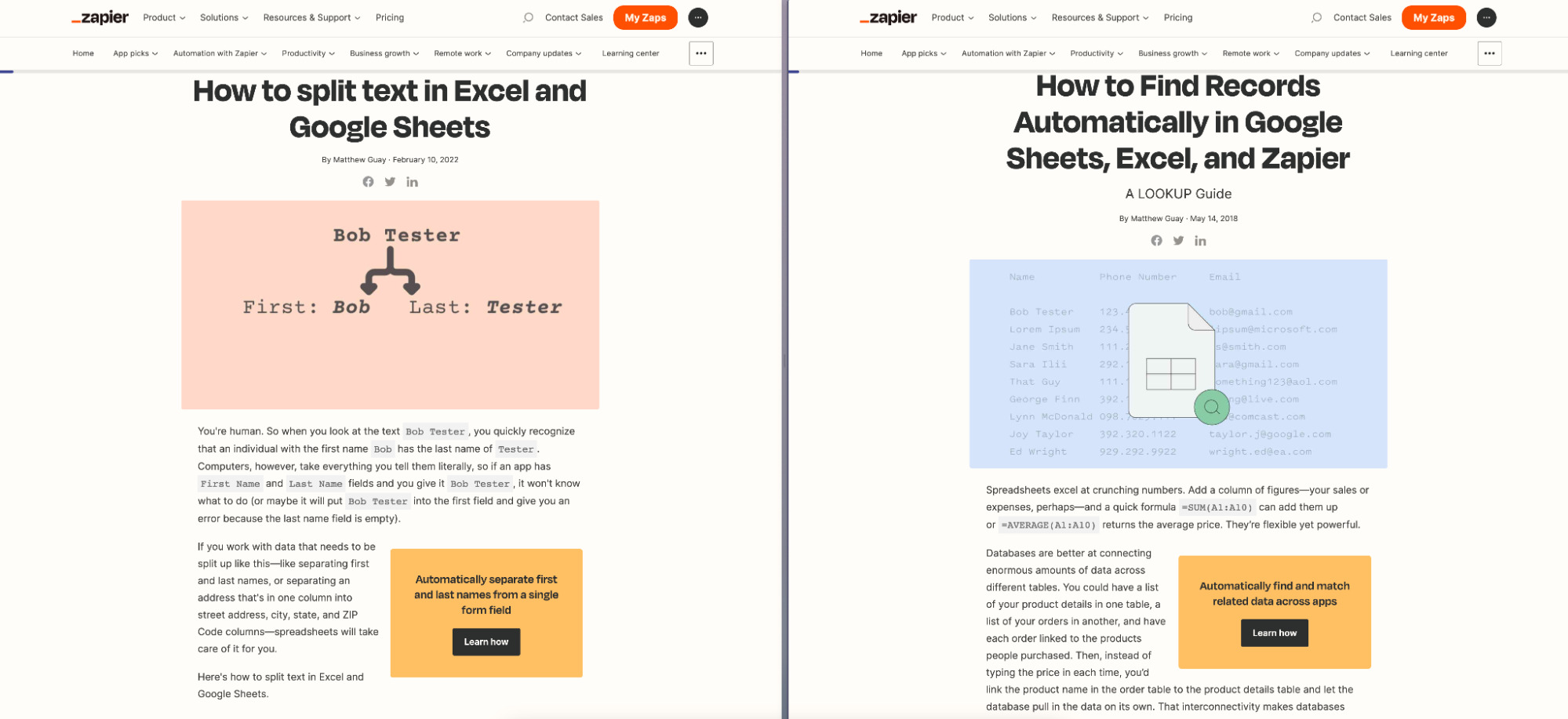
These tutorials bring in a couple thousand search visits per month—fewer visitors than roundups, but these are visitors more likely to need and use Zapier.

But you only need so many app roundups and tutorials. The next time we wrote about to-do list apps, you wouldn’t be interested; the app you picked was humming along. You might be interested in learning how other teams manage projects, how remote work works, or about hitting inbox zero.
That’s why Zapier also wrote productivity articles: to maintain our relationship with readers by sending them something interesting each week. Those were the pieces easiest to syndicate—to get others to republish as guest posts that built backlinks and brought in new sources of readers and a bit more brand equity. They were less of my focus in Zapier’s earlier years but more of a core part of Zapier’s brand building and audience retention work today.
Roundups brought in far more pageviews. Tutorials brought in far more customers per pageview. Productivity posts brought back more repeat readers. Together, they built a search-powered growth engine.
What is published can always be published again too.
That was the third pillar of Zapier’s content: our Learning Center and its ebooks.
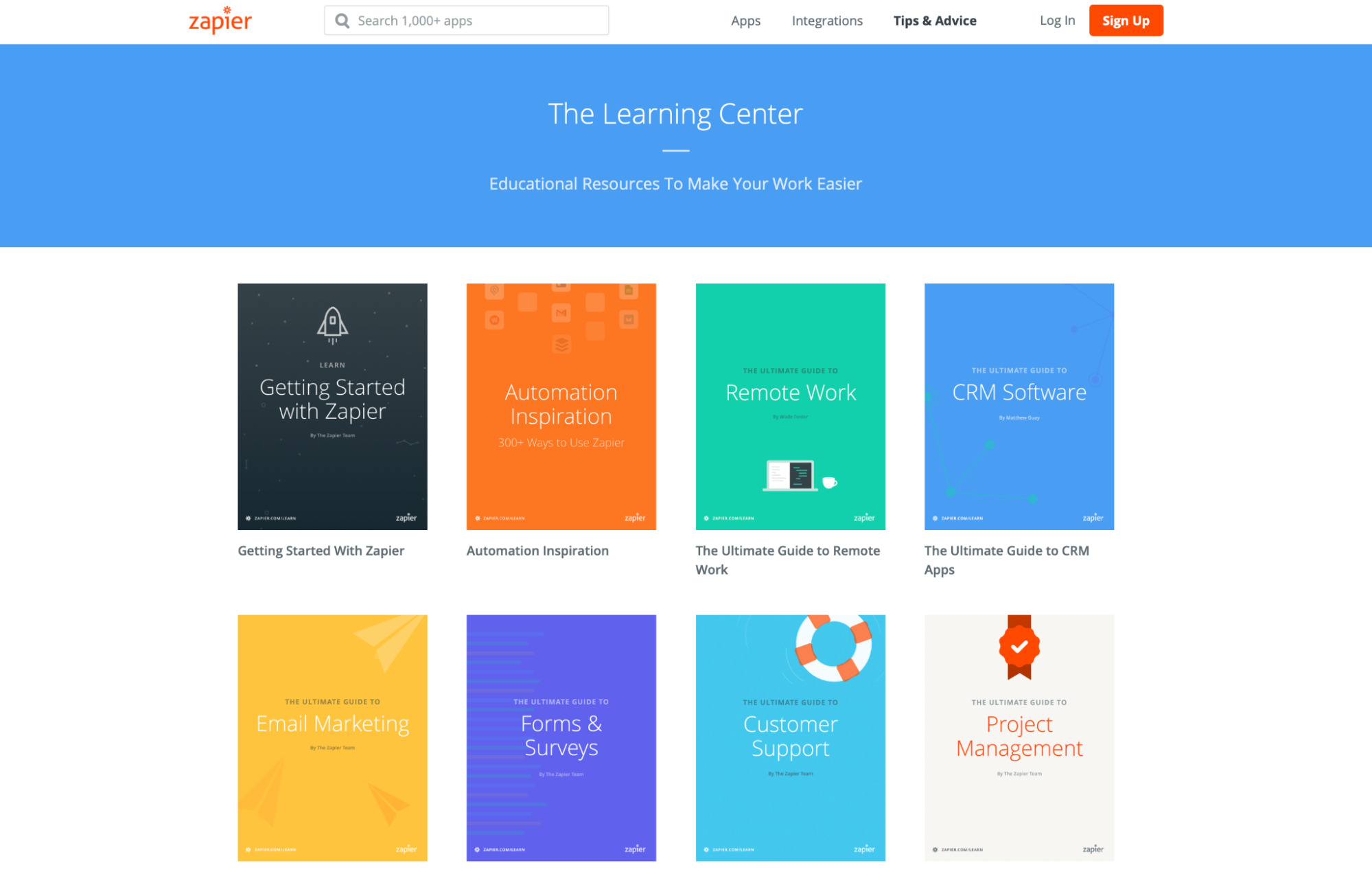
Once I’d written everything core about a software category like CRMs or a popular tool like Google Sheets, I’d pull those posts together, build them into an ebook with Leanpub, then publish on the Kindle and iBooks stores. The new ebook landing page drove email signups from book downloads and earned a higher time on site as people read one post after another instead of browsing just a single roundup.
Best of all, Zapier got a new audience from the ebook stores as a bit of off-Google SEO. People searched for Google Sheets in the Amazon store, downloaded Zapier’s book, then clicked through as they read the book. It wasn’t as easy to measure or value as Google search clicks, but it was search-driven traffic all the same.
Search data was a core part of prioritizing which of my ideas were best to write first. But experimentation also played a large part in my writing.
One day, for instance, I was trying to connect to the Wi-Fi at a mechanic while getting my car’s battery changed. It hit me that I should write a quick tutorial on how to get the Wi-Fi password pop-up to open when it wouldn’t at airports, coffee shops, and the like. A few hundred words later, the hastily written post was live.
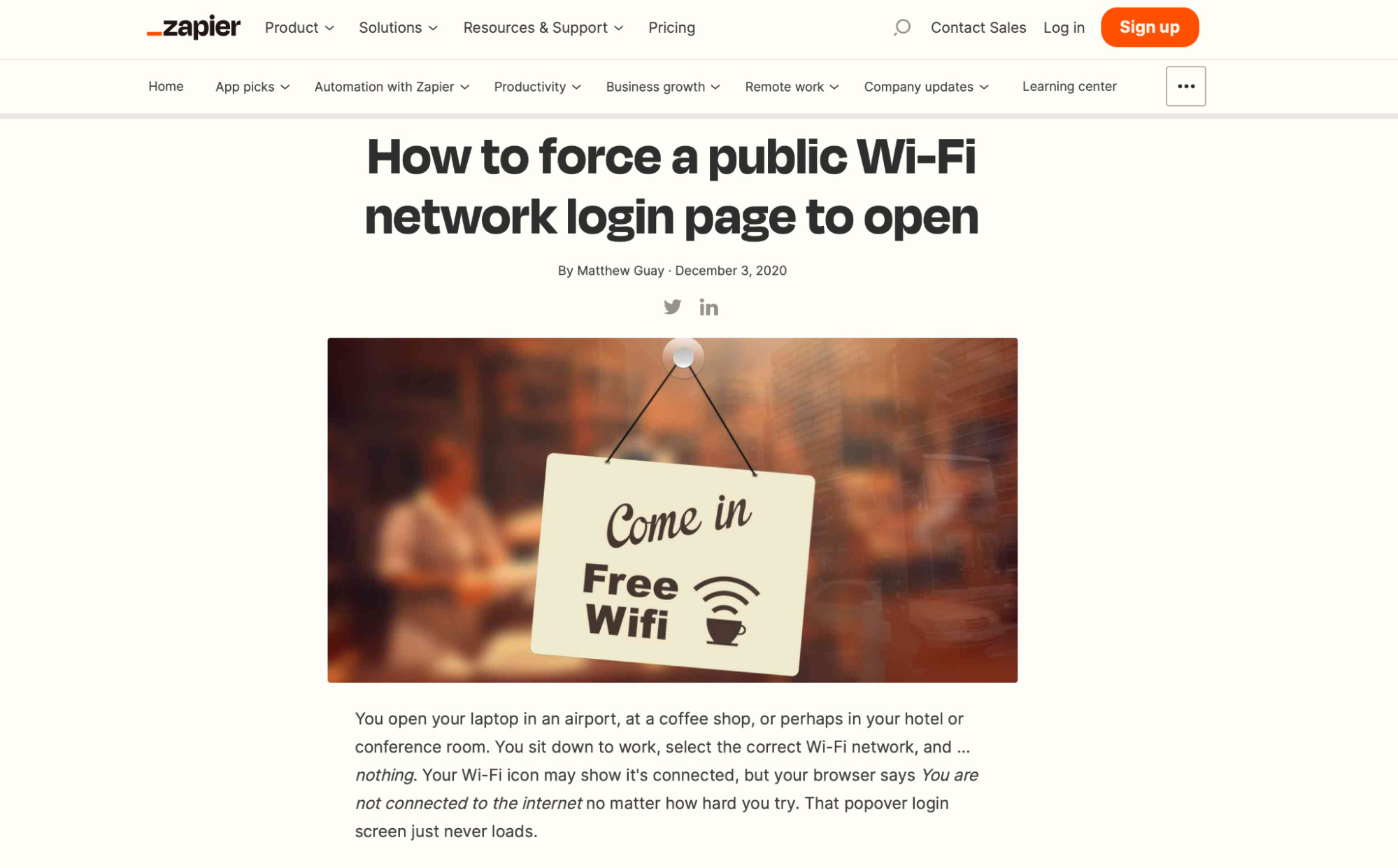
And it blew up, getting over 100,000 visits a month at its peak—more traffic than most of our well-researched, search-focused content did. It’s still, today, bringing in thousands of readers every month, ranking organically in the top three for terms like “force wifi login page” and “hilton wifi login,” of all things.
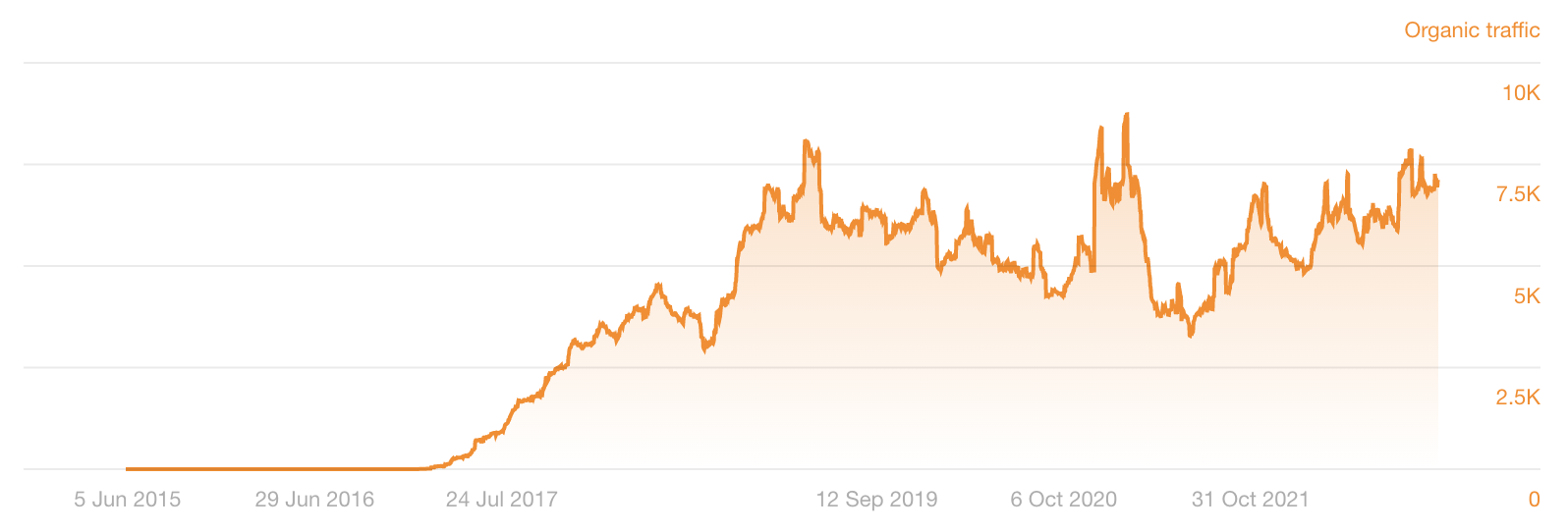
Turns out, experimenting and scratching your own itches can work out every so often too.
Final thoughts
Search data is historical data, records of what people searched at some time in the past.
If you hit a problem today and are on the bleeding edge, that problem may be something few people face today but one that more and more people will start facing later. If you write about some new thing, it’s not going to show promise in Ahrefs data today.
Just be patient. When that thing you wrote about suddenly is in the news or becomes an emerging trend, you’ll be ahead of the game before it starts.
So do your research. Publish stuff where you have a chance to rank well on search. Write long-form, especially at first, if it gives you a chance to build more keywords and connections into a piece.
But also, never stop experimenting. If you really want to write something, go for it even if the stats aren’t there yet. It can’t hurt, and it just may be your breakout piece.


